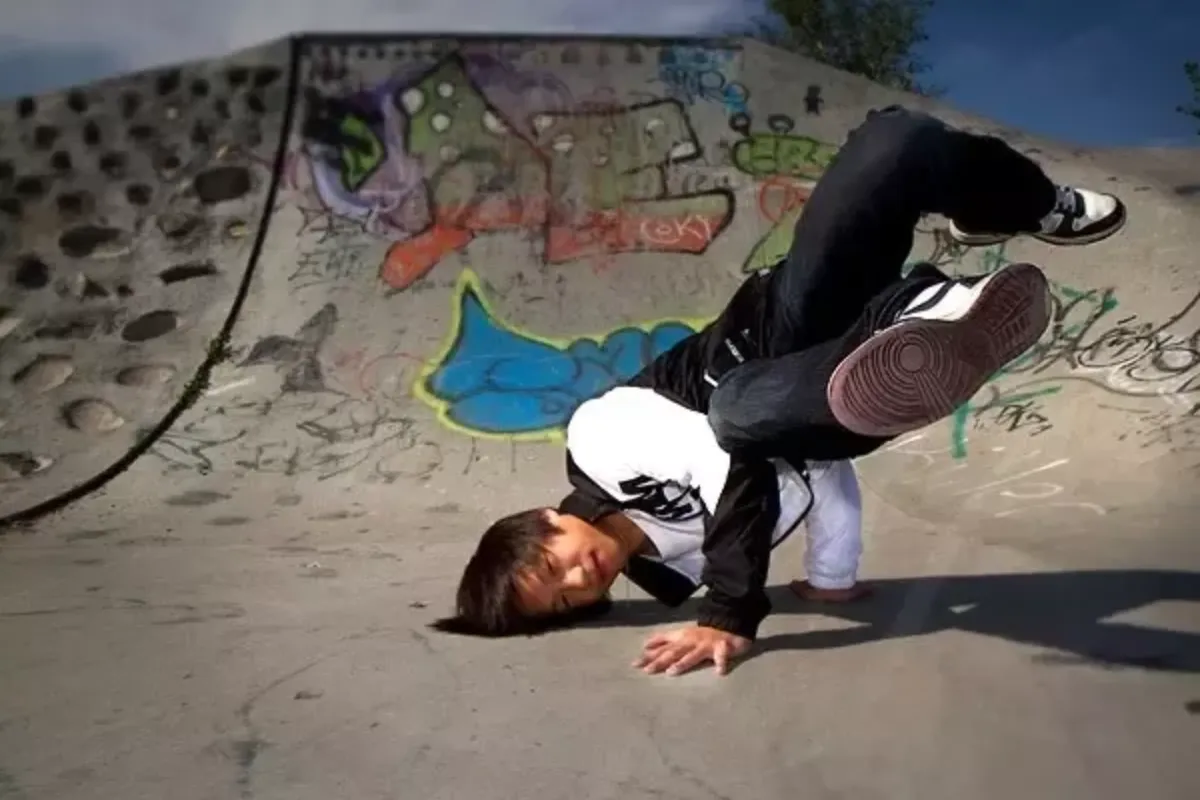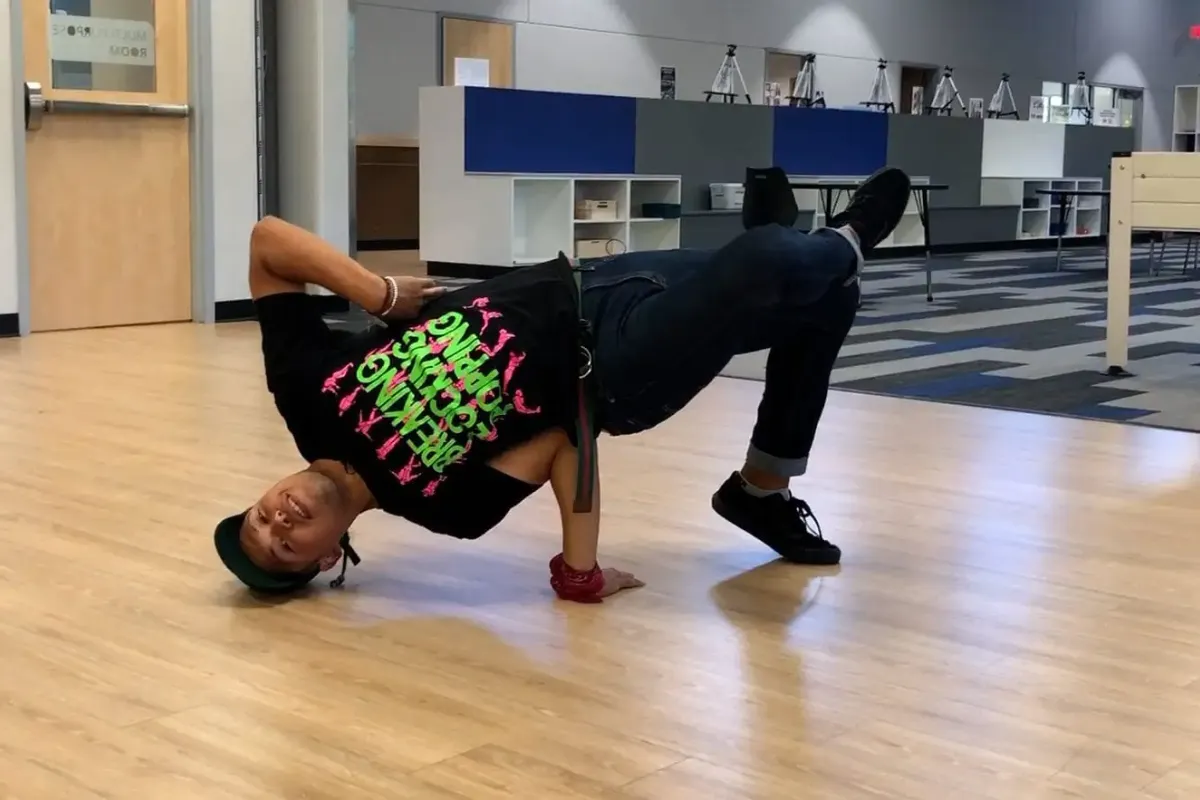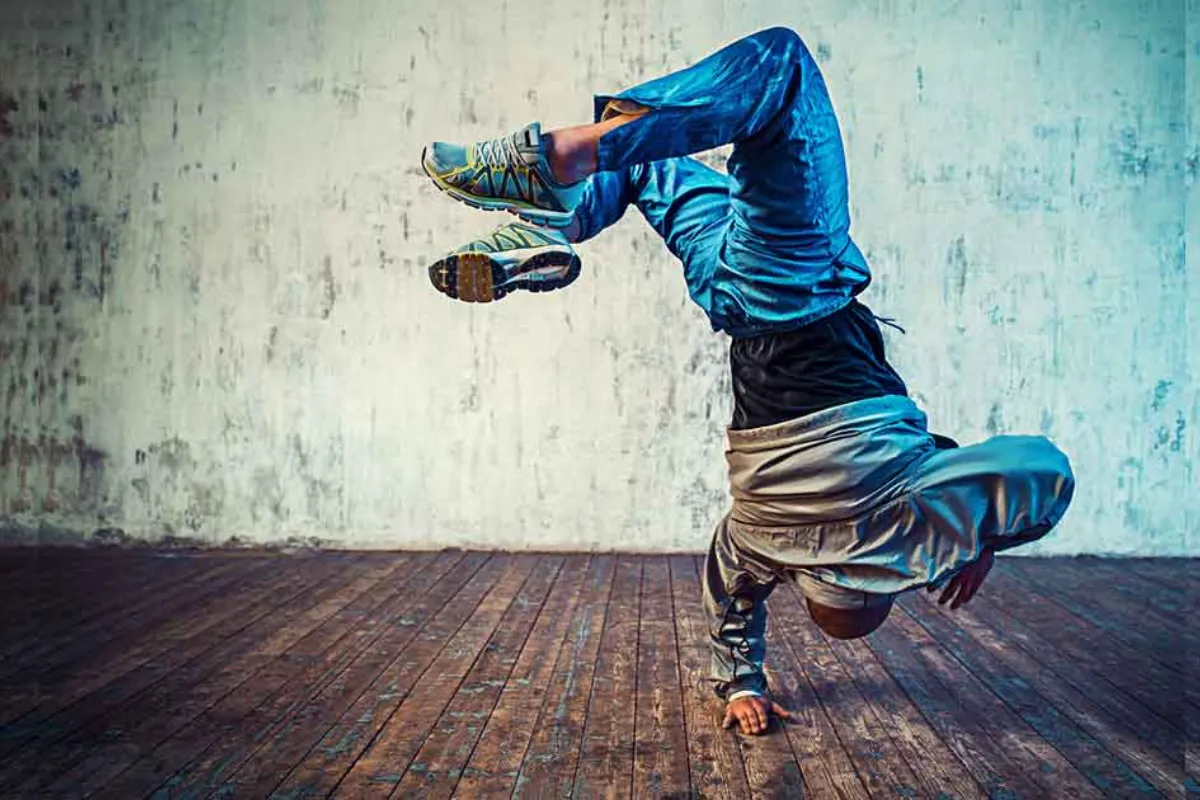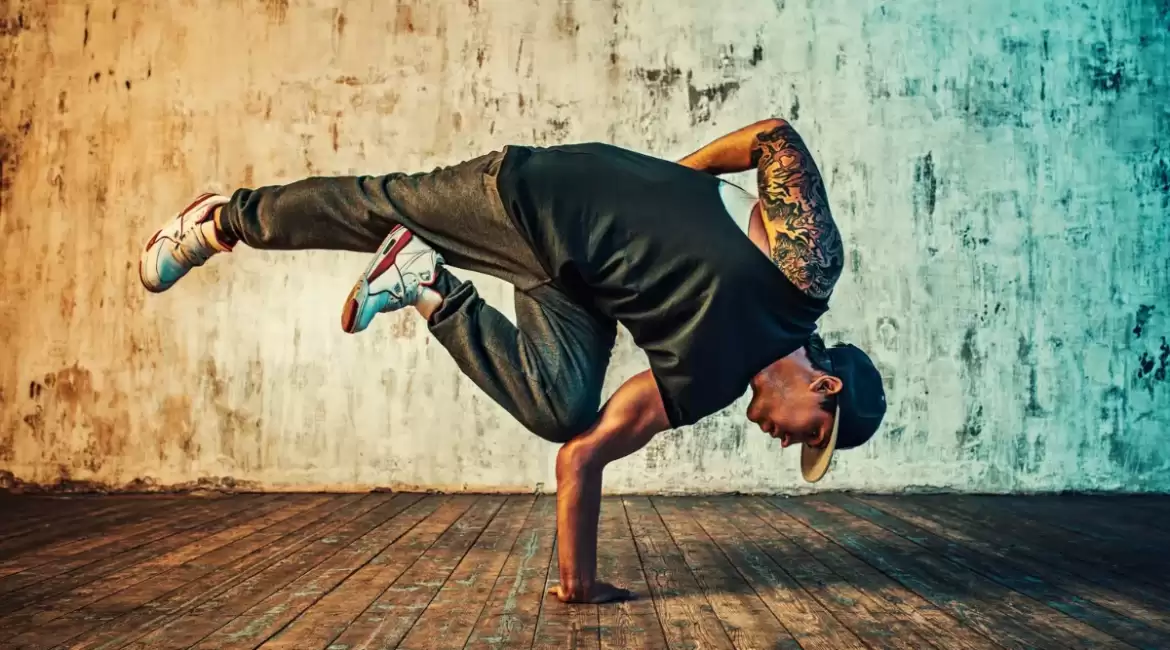What is Breakdancing? Breakdancing, also known as b-boying or b-girling, is a thrilling art form that merges athleticism, creativity, and style. It captivates audiences with its dynamic movements, intricate footwork, and gravity-defying power moves. A key element of breakdancing’s allure is the freeze—brief moments of stillness that punctuate the flurry of motion. These pauses, often held for just a few seconds, highlight a dancer’s balance, control, and poise.
For those aspiring to perfect the art of breakdancing freezes, here is a comprehensive guide filled with tips and techniques to help you achieve these awe-inspiring moments of stillness. Join Learn Breakdance as we explore “Breakdancing Freeze Tips: Mastering the Art of Stillness in Motion.”
Foundational Fitness: Building a Strong Base

Before diving into the specifics of mastering freezes, it is essential to build a strong foundation in strength, flexibility, and balance. These fundamental attributes will underpin your ability to execute and maintain freezes with the necessary form and stability.
Strength Training
- Core: A robust core is vital for sustaining balance and control during freezes. Engage in exercises such as planks, crunches, and sit-ups to fortify your abdominal and back muscles. A strong core not only supports your body but also enhances your ability to hold positions with grace and stability.
- Upper Body: Developing powerful upper body muscles is crucial for supporting your weight and maintaining proper form in various freeze positions. Incorporate exercises like push-ups, rows, and bicep curls into your training regimen. These exercises will enhance your shoulder, arm, and chest strength, making it easier to hold and transition smoothly between freezes.
- Legs: Strong legs form the foundation for effective transitions into and out of freezes. Engage in squats, lunges, and calf raises to build the strength and stability required in your lower body. Strong legs not only support your movements but also enhance your ability to execute powerful and controlled freezes.
Flexibility
Regular Stretching: Consistent stretching is key to improving your range of motion, which is crucial for achieving the deep bends and contortions often needed in freezes. Focus on stretching major muscle groups, including hamstrings, quadriceps, hip flexors, and shoulders. Flexibility training will help you achieve the necessary angles and positions with greater ease and comfort.
Balance Training
Balance Exercises: Integrating balance exercises into your routine will significantly enhance your ability to maintain stillness and control in various freeze positions. Incorporate exercises such as standing on one leg, using a balance board, or practicing yoga poses that emphasize balance. These exercises will improve your proprioception, coordination, and overall stability, making it easier to hold your freezes with poise and precision.
By building strength, flexibility, and balance, you will create a solid foundation that will enable you to master the art of breakdancing freezes. Stay dedicated to your training, and you’ll find yourself achieving those breathtaking moments of stillness with confidence and style.
Mastering the Basics: Essential Freeze Techniques

Once you’ve built a solid foundation of strength, flexibility, and balance, you can start learning the techniques for basic freezes. These foundational moves will serve as stepping stones for more advanced breakdancing maneuvers.
Toprock Freeze
- Position: Begin in a toprock stance, standing upright with your feet shoulder-width apart.
- Freeze: Engage your core and lift one leg off the ground, bending your knee and drawing it towards your chest. Extend your arms for balance and hold the position, demonstrating control and stability.
Baby Freeze
- Position: Squat down with your feet shoulder-width apart, extending your arms in front of you for balance.
- Freeze: Lean forward and place your hands flat on the ground, slightly wider than shoulder-width apart. As you do this, lift your feet off the ground, keeping your legs straight and aligning your body in a straight line. This freeze showcases your ability to balance on your hands while maintaining a solid form.
Chair Freeze
- Position: Start from a standing position with your feet shoulder-width apart.
- Freeze: Bend your knees and lower your body as if you are sitting on an imaginary chair. Ensure your back is straight and your core is engaged. Extend your arms for additional balance and hold the position, mimicking the act of sitting while suspended in the air.
Turtle Freeze
- Position: Begin on your hands and knees, keeping your back flat.
- Freeze: Tuck your chin towards your chest, then lift your hips and legs off the ground to form a rounded shell shape, reminiscent of a turtle’s shell. Keep your arms close to your body for support and maintain this position, demonstrating strength and control in your upper body and core.
By mastering these basic freezes, you will build a repertoire of essential techniques that can be combined and expanded upon as you progress in your breakdancing journey. Each freeze requires precise control and balance, setting the stage for more complex and dynamic moves.
Refining Your Form: Tips for Precision and Control

As you advance in your freeze training, it’s important to refine your form to achieve greater precision, control, and balance.
Body Alignment
- Maintain Proper Posture: Pay close attention to your posture throughout the freeze. Ensure your spine is aligned, your core is engaged, and your shoulders are relaxed. This helps to avoid strain and enhances stability.
- Engage Your Core: Keeping your core muscles engaged is vital for balance and control during freezes. This engagement will help prevent your body from wobbling or shaking.
- Isolating Muscle Groups: Focus on isolating the muscles required for each freeze position. This targeted engagement helps maintain proper form and prevents unnecessary movement in other parts of your body.
Balance and Control
- Find Your Balance Point: Experiment with various positions and hand placements to identify your balance point in each freeze. Finding this point will enhance your ability to hold the position with greater stability.
- Micro-Adjustments: Make small, controlled adjustments to maintain balance and avoid tipping over. Use your core muscles and subtle shifts in weight distribution to achieve precise control.
- Visual Cues: Utilize visual cues to help maintain balance. Focus on a specific point in front of you or use a mirror to check your alignment.
By focusing on these aspects, you can refine your freeze techniques, leading to more impressive and stable holds. This attention to detail in form and balance will set the foundation for mastering more advanced breakdancing moves.
Transitioning with Style: Moving In and Out of Freezes

Transitions are the fluid movements that link your freezes, adding dynamism and flow to your breakdancing routine. Mastering these transitions requires practice, coordination, and a creative approach.
Entering Freezes
- Power Moves: Use power moves like windmills, flares, or handstands to enter freezes with momentum and energy. Time your transition to coincide with the peak of the power move for a dramatic effect.
- Footwork: Incorporate footwork patterns such as six steps or other dynamic steps to lead into more complex freezes. Use the momentum from your footwork to smoothly transition into the freeze position.
- Drops and Rolls: Integrate drops and rolls to add an element of surprise and excitement to your transitions. These movements can create unexpected and captivating entries into freezes.
Exiting Freezes
- Power Moves: Explode out of freezes using power moves like flares, windmills, or handstands. The release of tension from the freeze will enhance the power and impact of the subsequent move.
- Footwork: Transition out of freezes by integrating footwork patterns like six steps or other dynamic steps. Maintain a controlled flow as you exit the freeze and seamlessly blend into your next move.
- Changes of Level: Adjust your body level as you exit the freeze. For example, transition from a top rock freeze to a floor freeze by rolling or dropping to the ground.
Creativity and Personal Expression: Making Your Freezes Your Own
Breakdancing is an art form that thrives on creativity and personal expression. As you master the basics, infuse your freezes with your unique style and personality.
Experimentation
- Explore Different Positions: Experiment with various body positions and hand placements to create unique freezes that reflect your individuality.
- Combine Elements: Blend components from different freezes to develop your own signature moves, adding a personal touch to your routines.
- Incorporate Props: Introduce props like hats, gloves, or canes to add an extra layer of creativity and flair to your freezes, making your performance more engaging.
Musicality
- Listen to the Beat: Pay close attention to the music and synchronize your freezes with the rhythm and beat. Use pauses in the music to highlight your freezes effectively.
- Match Your Energy: Align the intensity of your freezes with the energy of the music. Opt for powerful freezes for upbeat tracks and slower, controlled freezes for more mellow tempos.
- Create Transitions to the Music: Choreograph your transitions to match the flow and changes in the music, ensuring a seamless and harmonious performance.
Performance
- Facial Expressions: Use facial expressions to convey emotion and captivate the audience, adding depth to your performance.
- Eye Contact: Engage with the audience by making eye contact, drawing them in and creating a personal connection.
- Stage Presence: Command the stage with confidence and charisma. Utilize your body language and energy to project a strong presence, captivating your audience from start to finish.
Remember, breakdancing is a journey of continuous learning and self-expression. Embrace the process, enjoy the challenge, and let your creativity shine through your freezes. With dedication and passion, you’ll master the art of breakdancing freezes and captivate audiences with your unique style and flair.
Conclusion: Mastering the Art of Breakdancing Freezes
Breakdancing freezes are more than just moments of stillness; they are expressions of balance, control, creativity, and personal style. Mastering the art of freezes requires dedication, practice, and a passion for the art form. By following the tips and techniques outlined in this comprehensive guide, you’ll be well on your way to achieving those awe-inspiring moments of stillness that will captivate audiences and leave a lasting impression.
Remember, breakdancing is a journey of continuous learning and self-expression. Embrace the process, enjoy the challenge, and let your creativity shine through your freezes. With dedication and passion, you’ll master the art of breakdancing freezes and become a captivating b-boy or b-girl.
So, get out there, practice hard, and let your freezes speak volumes about your unique style and artistry. The world of breakdancing awaits your creativity and expression.


Leave a reply